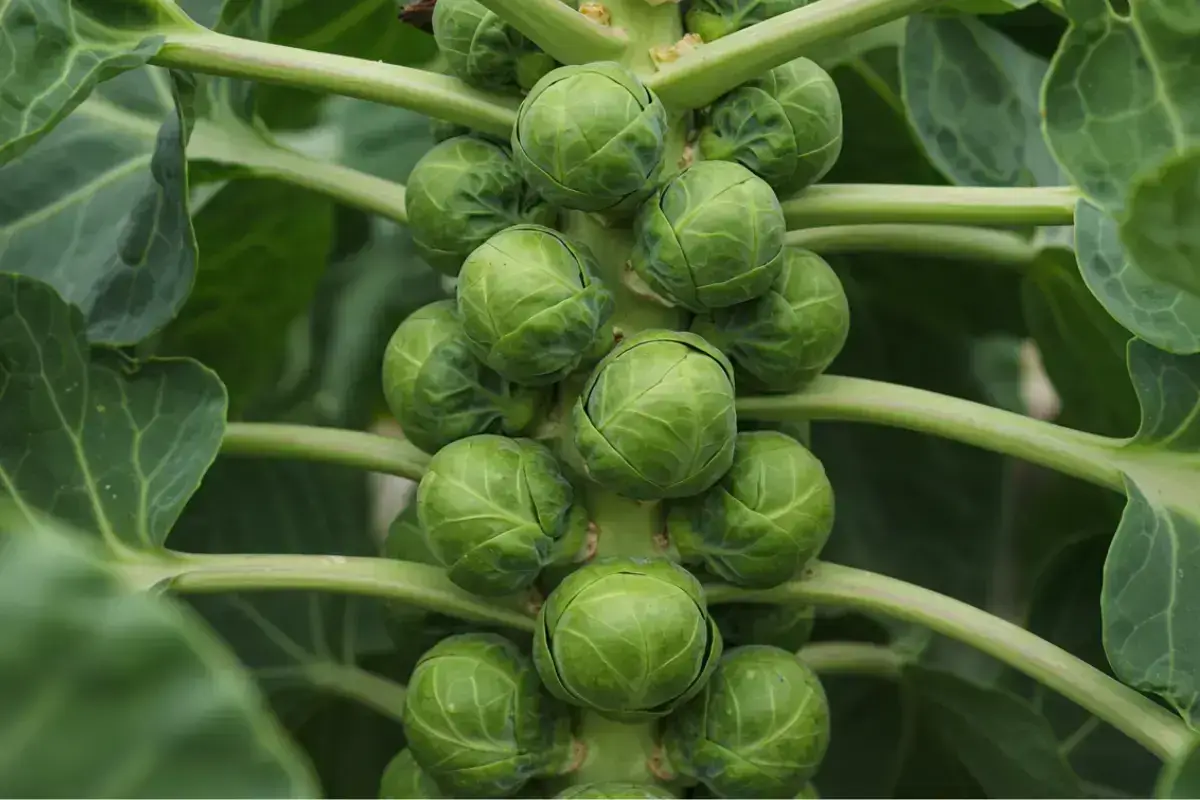Ever wondered how a Brussel Sprout Tree could transform your garden? It’s not just a tall tale—this veggie-growing marvel is real! If you think of Brussel sprout as humble, tiny crops, think again. With a little patience and some expert tips, you can cultivate your own Brussels Sprouts Tree, reaching impressive heights and offering a bounty of delicious sprouts. Stick around, because we’re about to spill all the secrets to growing this towering treat!
Table of Contents
Quick Guide to Growing Brussels Sprouts
Ready to grow your own Brussel Sprout Tree? It’s easier than you think! Here’s a fun and simple roadmap to get you started:
- Choose the Right Variety: There are plenty of options! Some varieties grow taller, while others are more compact. Pick one that suits your garden space.
- Prep the Soil: Rich, well-draining soil is a must for strong, healthy sprouts.
- Planting Time: Start seeds indoors, then transplant them when the weather’s right—give them room to grow!
- Water & Care: Keep your sprouts hydrated and feed them with a balanced fertilizer.
- Harvest: Wait until the lower sprouts are firm and ready. Don’t rush; patience rewards you with a bounty!
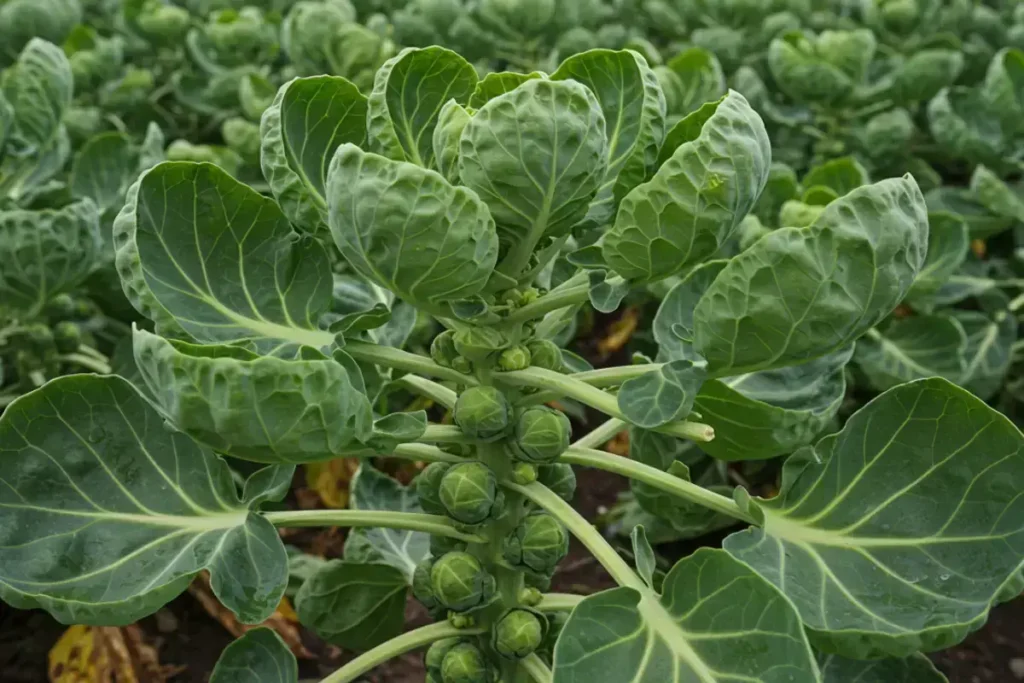
Soil, Planting, and Care of Brussel Sprout Tree
To grow a thriving Brussels Sprouts Tree, it all starts with the right foundation. Here’s what you need to know:
- Soil: Brussels sprouts love rich, loamy soil that drains well. Target a pH range of 6.0 to 7.5. If your soil is too acidic, add lime to balance it out. If it’s heavy clay, amend it with organic matter to improve drainage.
- Planting: Start seeds indoors about 6–8 weeks before the last frost date. Once seedlings are strong and the soil warms up, transplant them into the garden. Space plants about 18 inches apart, giving your Brussels Sprouts Tree room to reach its full height.
- Care: Keep your plants hydrated, especially during dry spells, but avoid water logging. Apply mulch around the base to help retain moisture and suppress weed growth. Feed your Brussels sprouts with a balanced fertilizer, and consider a side dressing of compost halfway through the growing season to keep them nourished.
Troubleshooting Common Issues
Growing a Brussel Sprout Tree can sometimes feel like a battle with the elements, but don’t worry—there are plenty of ways to tackle common problems head-on!
- Loose or Small Sprouts: If your sprouts aren’t forming tightly or are staying small, it may be due to poor soil or a lack of sunlight. Brussels sprouts need at least 6-8 hours of full sun each day. Make sure you’re planting them in a sunny spot and using nutrient-rich, well-draining soil. Additionally, ensure you’re feeding your plants regularly with a balanced fertilizer—especially one high in potassium, which helps with sprout development.
- Yellowing Leaves: Yellow leaves can be a sign that your Brussels Sprouts Tree isn’t getting enough nutrients, particularly nitrogen. A quick fix is to apply a nitrogen-rich fertilizer or add compost around the base of the plant. Regular mulching also helps retain moisture and adds valuable nutrients to the soil.
- Pests: Aphids, cabbage worms, and other pests love to feast on Brussels Sprouts Trees. Keep a close eye for signs of damage, like holes in the leaves or sticky residue (a telltale sign of aphid infestation). Combat these pests by spraying plants with neem oil, using insecticidal soap, or introducing natural predators like ladybugs to your garden.
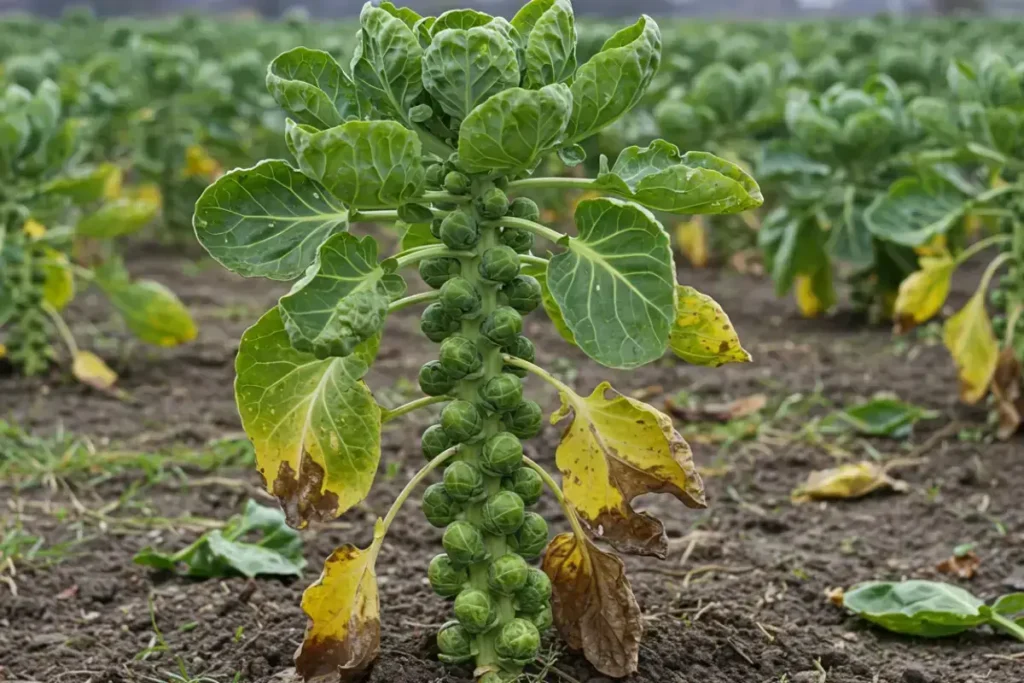
Harvesting and Storing Brussel Sprout
Harvesting your Brussel Sprout Tree at the right time ensures maximum flavor and nutrition. Wait until the lower sprouts are firm and about the size of a marble—usually 90 to 180 days after planting. Start by plucking the mature sprouts from the bottom, working your way up as the others ripen. For storage, keep them in a cool, humid place, or blanch and freeze them for longer preservation. Fresh sprouts are at their best within a week of harvesting!
Brussels Sprout Varieties
When choosing the right variety for your garden, it’s essential to consider the growing conditions. Brussels sprouts come in many types, each with unique traits. Popular varieties like ‘Long Island Improved’ are perfect for larger gardens and produce tall, sturdy stalks. On the other hand, ‘Jade Cross’ is a compact variety that works well in smaller spaces or containers. Choose based on your available space, climate, and the flavor profile you desire—some varieties are sweeter, others more robust!
Soil Preparation for Brussel Sprout
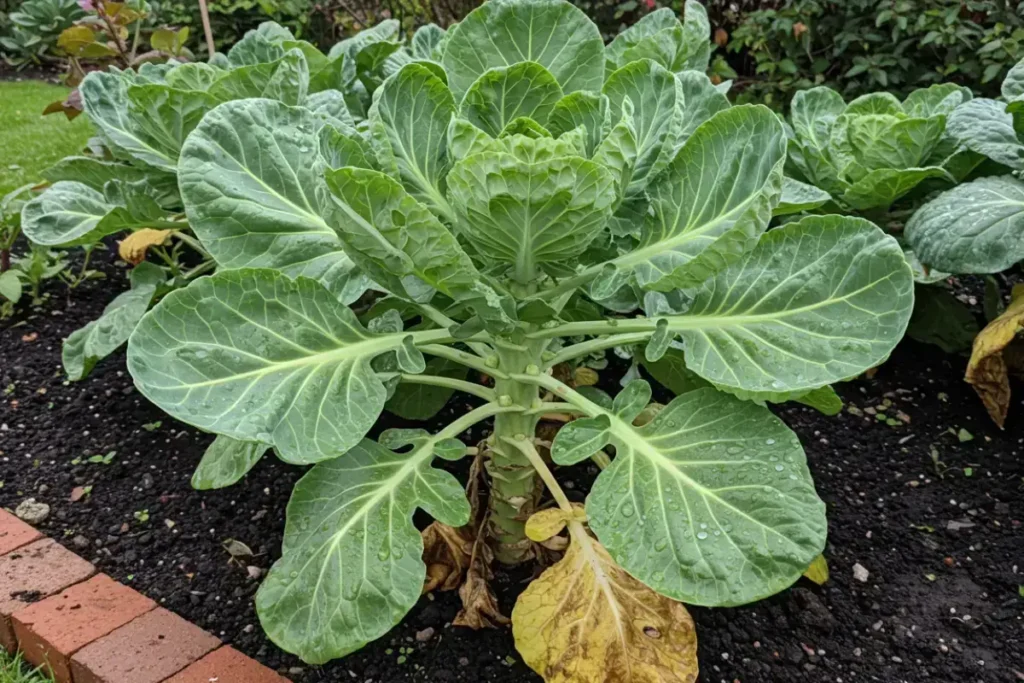
Preparing the soil properly is the first step toward a successful Brussel Sprout Tree harvest. Start by ensuring your soil is well-draining and rich in organic matter. Brussels sprouts thrive in loamy soil with a pH between 6.0 and 7.5. To enrich the soil, mix in compost or well-rotted manure to improve texture and provide essential nutrients. If your soil is heavy or clay-like, incorporate sand or perlite to enhance drainage. For added fertility, a slow-release fertilizer can give your plants a strong start, ensuring they grow tall and produce abundant sprouts!
How to Space Brussel Sprout for Optimal Growth?
Giving your Brussel Sprout Tree enough space is key to helping it grow strong. Make sure to plant each sprout about 18–24 inches apart. This allows the plants to spread out and get plenty of sunlight and air. Rows should be 30–36 inches apart to make it easier to move around. If you plant them too close together, they won’t grow as well. So, keep them spaced properly for the best chance at a healthy, bountiful harvest!
How Can You Manage Pests and Diseases on Your Brussel Sprout Tree?
Protecting your Brussel Sprout Tree from pests and diseases is essential for a successful harvest. Aphids, cabbage worms, and flea beetles can damage leaves and stunt growth. To keep these pests in check, use natural remedies like neem oil or insecticidal soap. Introducing beneficial insects, such as ladybugs, can help control aphids naturally. Also, rotate crops each year to reduce the risk of soil-borne diseases like black rot. Healthy plants are your best defense against these common garden threats!
Troubleshooting Bitter Tasting Brussel Sprout
Bitter-tasting Brussel Sprout Trees are a common garden complaint, but there’s usually a way to fix it! Several environmental and care-related factors can contribute to that unpleasant taste:
- Stressful Weather: Extreme heat or sudden cold can cause Brussels sprouts to develop a bitter flavor. If temperatures fluctuate too much, the plant goes into stress mode, which affects its taste. Try to grow your Brussel Sprouts Tree in a location where temperatures remain relatively stable, or use row covers to protect the plants from extreme weather.
- Late Harvesting: If you leave your Brussel sprouts on the stalk too long, they can develop bitterness. To avoid this, harvest them when they’re still small, firm, and tight. The longer they stay on the plant, the more likely they are to taste bitter. Be patient, but don’t wait too long!
- Nutrient Imbalance: Over-fertilizing with nitrogen encourages rapid growth, but it can also lead to a bitter flavor. Stick to a balanced fertilizer that includes phosphorus and potassium, which promote healthy sprout development without triggering bitterness. Adding compost around the base of your Brussels Sprouts Tree can also enrich the soil with the right nutrients.
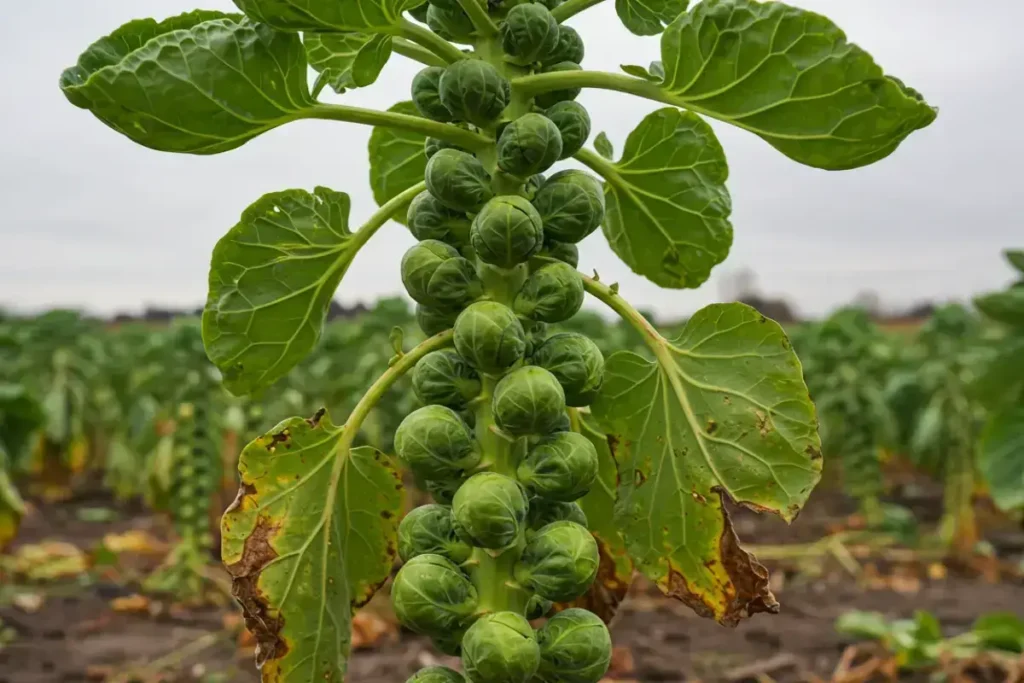
FAQs
Why are my Brussel sprout loose and not firm?
Loose sprouts may be caused by insufficient sunlight, poor soil, or improper spacing. Ensure your plants get full sun, are well-spaced, and are in nutrient-rich soil to encourage firm growth.
How do I get my sprouts to mature evenly?
To mature evenly, plant in uniform conditions with proper spacing. Avoid overcrowding, water regularly, and fertilize consistently. Trim lower leaves to encourage top sprouts to ripen first.
Why are my Brussel sprouts stunted?
Stunted growth may result from poor soil, lack of sunlight, or overcrowding. Ensure your plants have well-drained, rich soil and enough space to thrive.
How tall do Brussel sprouts trees grow?
Brussels sprout trees can reach 3 to 4 feet, with some varieties growing taller. Proper care, sunlight, and spacing are key to healthy, tall plants.
Where do Brussels sprouts grow in the US?
Brussels sprouts thrive in cooler climates like California’s coast, the Northeast, and the Pacific Northwest. They need mild summers and frost-free winters for optimal growth.
Is there a Brussel sprouts tree?
While not a true tree, Brussel sprouts trees are tall, sturdy plants with stalks that reach 3 to 4 feet, supporting tightly packed sprouts. With proper care, they create a unique and rewarding garden display.

